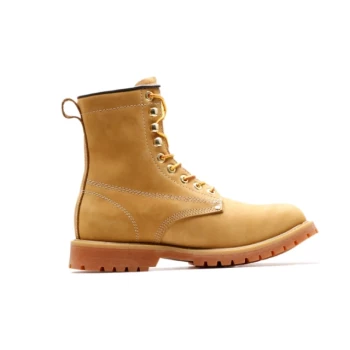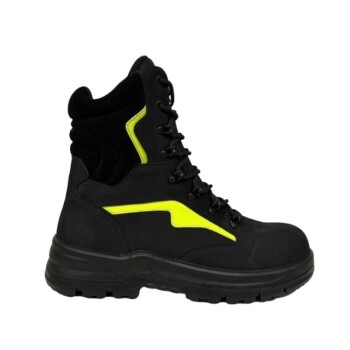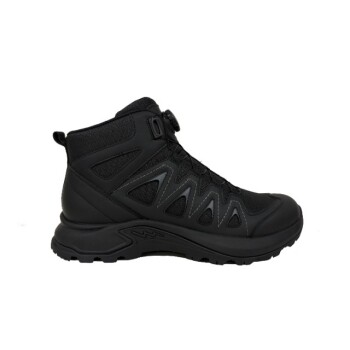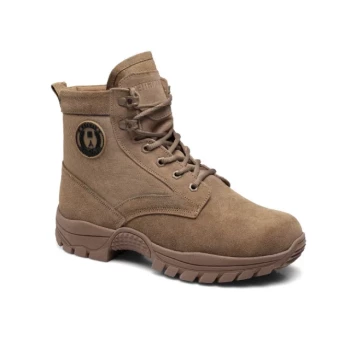For a firefighter, proper footwear is not merely a part of the uniform; it is a foundational system for safety, performance, and long-term health. Fire boots are engineered to do far more than just shield the feet from heat. They protect against a wide range of physical hazards, provide critical stability on unstable ground, and directly impact a firefighter's endurance and ability to avoid career-ending injuries.
The right boot does more than protect you from the immediate dangers of the fireground. It serves as a critical interface between you and your environment, directly influencing your mobility, fatigue levels, and the long-term health of your knees, hips, and back.
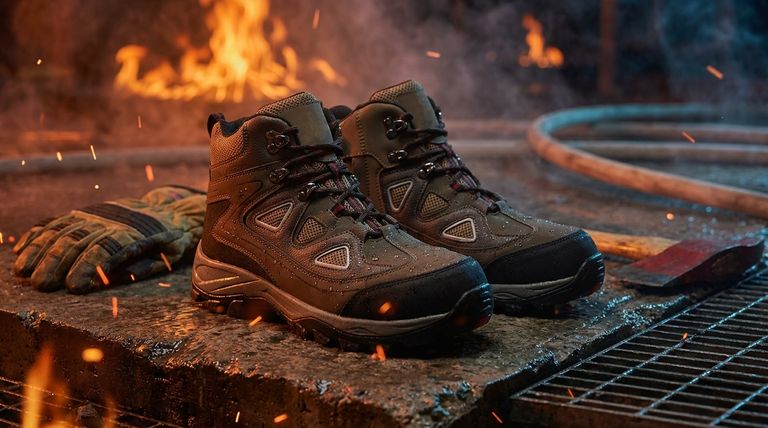
More Than Just Fire Protection
A firefighter's boot is the primary defense for one of the body's most complex structures. Understanding its multiple protective roles is essential.
Shielding from Immediate Hazards
The most obvious function of a fire boot is to create a barrier against the environment. This includes protection from extreme heat, flames, and contact with hazardous materials.
They are built with reinforced safety toes and puncture-resistant soles to guard against injuries from falling debris and sharp objects hidden in smoke or water.
Additionally, features like waterproofing and insulation are critical for keeping feet dry and comfortable during extended operations, which helps prevent other types of foot injuries.
The Foundation of Stability and Movement
The human foot contains 26 bones and 33 joints, all working together to provide balance and mobility. Fire boots are designed to support this intricate system.
High ankle support is a standard feature, crucial for preventing sprains, twists, and fractures when navigating uneven, unpredictable, or debris-covered terrain.
Ensuring Confident Traction
A fall on the fireground can be catastrophic. That is why boots must provide exceptional slip resistance.
High-quality outsoles, often made from specialized materials like Vibram, are designed to maintain grip on wet, oily, or slippery surfaces, allowing firefighters to move with confidence and stability.
The Hidden Impact on Performance and Health
While hazard protection is paramount, the subtler effects of footwear on a firefighter's body can determine both operational effectiveness and career longevity.
The Critical Role of Proper Fit
An ill-fitting boot is a significant liability. Boots that are too loose or too tight can hinder movement, create painful blisters, and compromise agility.
The National Fire Protection Association (NFPA) specifically recommends individual sizing to ensure every firefighter has a boot that fits correctly, maximizing both safety and performance.
Reducing Fatigue and Enhancing Focus
Comfort is not a luxury; it is a performance enhancer. Firefighting involves crawling, climbing, running, and carrying heavy loads for long periods.
Boots with proper cushioning, arch support, and breathability reduce the onset of fatigue. By preventing foot pain and discomfort, they allow a firefighter to remain focused on the critical tasks at hand.
Preventing Chronic, Long-Term Injury
Footwear has a direct kinetic impact on the entire body. Inadequate support or poor biomechanics in a boot can lead to secondary injuries in the knees, hips, and back.
Protecting the feet is a preventative measure that helps ensure a long and healthy career by avoiding the chronic joint and back pain that can result from years of operational stress.
Understanding the Trade-offs: The Weight Factor
While protection is essential, it often comes with a trade-off in weight, which has significant consequences for firefighter performance.
The Burden of Heavy Boots
Heavier boots directly increase physical exertion and fatigue. This increased effort can lead to higher air consumption, shortening the time a firefighter can operate on a self-contained breathing apparatus (SCBA).
Altering Natural Biomechanics
Excessive boot weight fundamentally alters a person's natural gait. This change increases the loading forces on the hip and knee joints, contributing to long-term wear and tear.
The Increased Risk of Trips and Falls
Heavy, cumbersome boots can make it more difficult to clear obstacles, increasing the likelihood of trips, slips, and falls—a leading cause of fireground injuries.
How to Apply This to Your Goal
Choosing the right footwear requires balancing protection with performance based on your primary role and operational needs.
- If your primary focus is maximum hazard protection: Prioritize boots with the highest thermal rating, reinforced construction, and puncture resistance for structural firefighting.
- If your primary focus is agility and reduced fatigue: Seek out lighter-weight, well-fitted boots that offer excellent flexibility and support for wildland, rescue, or other long-duration events.
- If your primary focus is long-term career health: Never compromise on proper fit and invest in boots with superior ergonomic support and cushioning to minimize stress on your joints.
Ultimately, selecting the right footwear is a direct investment in your safety, effectiveness, and well-being for your entire career.
Summary Table:
| Key Consideration | Why It Matters for Firefighters |
|---|---|
| Hazard Protection | Shields from heat, flames, punctures, and hazardous materials. |
| Stability & Traction | Prevents slips and falls on unstable, wet, or debris-covered terrain. |
| Proper Fit | NFPA-recommended for maximizing agility and preventing blisters and injuries. |
| Fatigue Reduction | Proper cushioning and support enhance focus and endurance during long operations. |
| Long-Term Health | Ergonomic design helps prevent chronic knee, hip, and back injuries. |
Equip Your Team with Footwear Built for the Mission
As a large-scale manufacturer, 3515 produces a comprehensive range of high-performance safety footwear for distributors, brand owners, and bulk clients. Whether your team requires maximum protection for structural firefighting or agile, lightweight boots for wildland and rescue operations, our production capabilities encompass all types of safety shoes and boots.
We partner with you to deliver footwear that balances critical protection with the ergonomic support needed for performance and long-term health. Let's discuss how we can meet your specific requirements.
Contact 3515 today for a consultation and elevate your team's safety standards.
Visual Guide
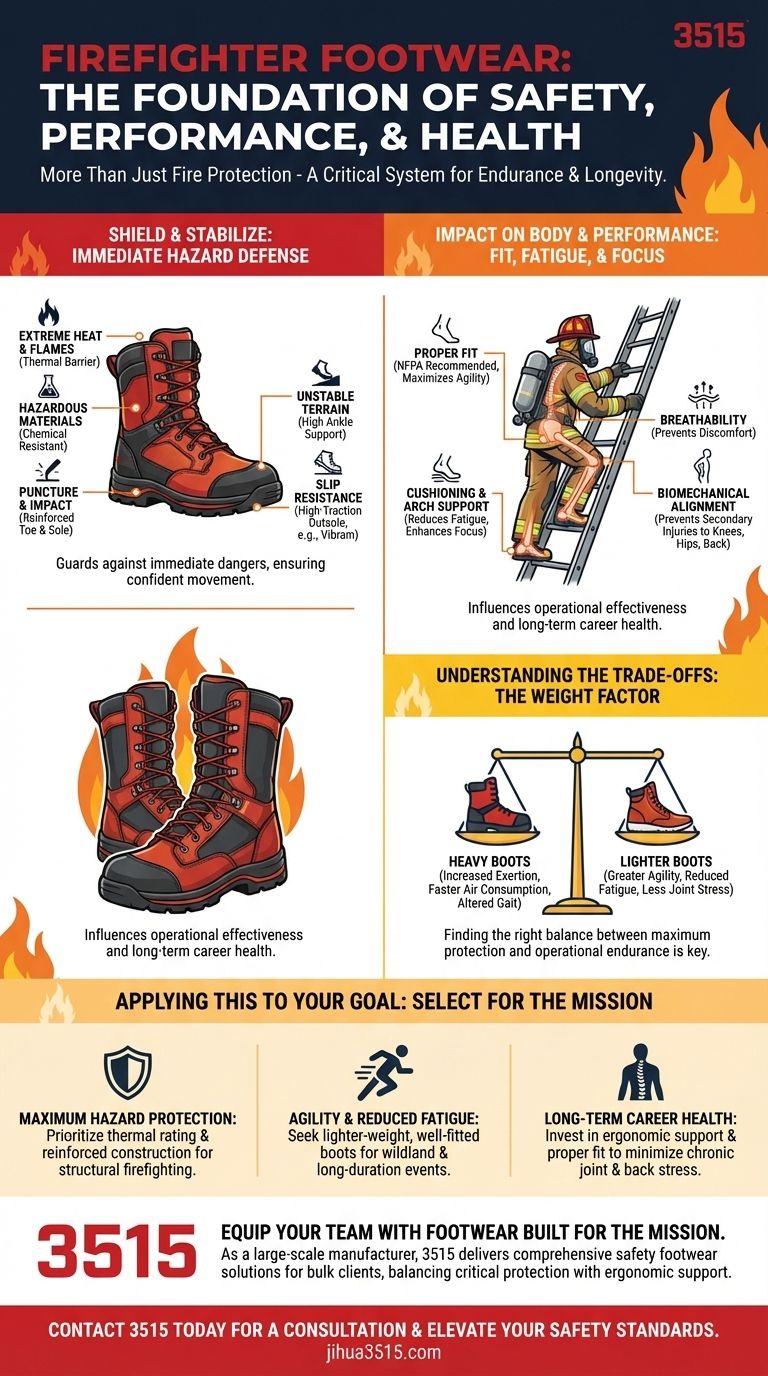
Related Products
- Safety Footwear Wholesale Manufacturer for Custom OEM/ODM Production
- High Performance Fire-Retardant Waterproof Safety Boots
- Premium Flame-Retardant Waterproof Safety Boots and Shoes
- Premium High-Cut Waterproof Safety Boots Manufacturing & Wholesale Solutions
- Wholesale Safety Footwear Manufacturer for Bulk & Custom OEM Orders
People Also Ask
- What are OSHA approved shoes? Understanding the Correct Standards for Workplace Safety
- How do safety shoes contribute to cost savings for companies? A Strategic Investment in Risk and Cost Management
- How long can you wear safety boots? The Lifespan is Determined by Wear, Not Time
- What do heavy duty boots do? Protect Your Feet in Demanding Work Environments
- Is it normal to wear shoes in the house? A Guide to Hygiene, Comfort & Culture











